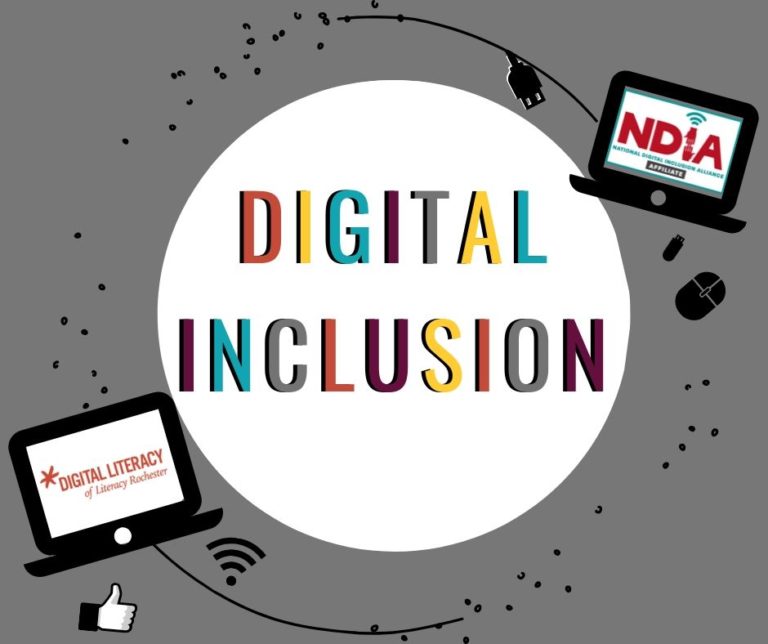Bridging the Gap - Digital Inclusion Initiatives for Socio-Economic Empowerment

The Digital Divide: A Barrier to Socio-Economic Growth
The digital divide is a pressing issue that hinders socio-economic growth and exacerbates existing inequalities. It refers to the gap between individuals with access to digital technology and those without, creating a chasm in opportunities for education, employment, and healthcare.
Understanding the Digital Divide
The digital divide is not just about access to devices or internet connectivity; it encompasses a range of factors, including:
- Digital literacy: The ability to effectively use digital technologies to access information and services.
- Infrastructure: The availability of reliable internet connectivity, devices, and digital tools.
- Content relevance: Access to digital content that is relevant, useful, and inclusive for diverse populations.
The Consequences of the Digital Divide
The digital divide has far-reaching consequences, including:
- Unequal access to education: Limiting opportunities for learning, skill-building, and social mobility.
- Barriers to employment: Restricting job prospects, career advancement, and economic empowerment.
- Inadequate healthcare: Limiting access to medical information, services, and resources.
Bridging the Gap
To address the digital divide and promote socio-economic growth, initiatives must focus on:
- Digital inclusion programs: Providing access to devices, internet connectivity, and digital literacy training.
- Infrastructure development: Investing in reliable internet connectivity and digital infrastructure.
- Inclusive content creation: Developing digital content that is relevant, accessible, and useful for diverse populations.
Digital Inclusion Programs: A Solution to the Digital Divide
Digital inclusion programs are initiatives designed to address the growing concern of the digital divide, aiming to provide access to digital technology and training to underserved communities. These programs play a crucial role in bridging the gap between those who have access to digital resources and those who do not, ultimately promoting socio-economic empowerment.
Objectives of Digital Inclusion Programs
The primary objectives of digital inclusion programs are:
- Providing access to digital devices, internet connectivity, and digital literacy training
- Bridging the digital divide by reaching out to underserved communities
- Empowering individuals with the skills to effectively utilize digital technology
- Creating opportunities for socio-economic growth and development
Key Components of Digital Inclusion Programs
Effective digital inclusion programs typically consist of the following components:
- Digital device donation or low-cost purchasing options
- Internet access and affordable data plans
- Digital literacy training and education
- Technical support and maintenance
- Community engagement and outreach
Benefits of Digital Inclusion Programs
The benefits of digital inclusion programs are numerous, including:
- Improved access to information and resources
- Enhanced socio-economic opportunities
- Increased digital literacy and skills
- Better connectivity and communication
- Empowerment of marginalized communities
Challenges and Limitations
Despite the benefits, digital inclusion programs face challenges and limitations, such as:
- Limited funding and resources
- Infrastructure and connectivity issues
- Digital literacy gaps and training needs
- Sustainability and scalability concerns
- Addressing diverse community needs and languages
Conclusion
Digital inclusion programs offer a solution to the digital divide, providing access to digital technology and training to underserved communities. By understanding the objectives, components, benefits, and challenges of these programs, we can work towards creating a more inclusive digital landscape, ultimately promoting socio-economic empowerment for all.
Key Components of Digital Inclusion Programs
Digital inclusion initiatives aim to bridge the socio-economic divide by providing equal access to digital technologies. The following are crucial components of effective digital inclusion programs:
Access to Digital Devices and Internet Connectivity
This fundamental component ensures that underserved communities have access to digital devices such as computers, smartphones, and tablets, as well as reliable internet connectivity. This can be achieved through device donations, low-cost purchasing options, and public-private partnerships to establish community networks and internet service providers.
Digital Literacy Training and Education
Acquiring digital skills is vital for individuals to fully benefit from digital technologies. Digital literacy training and education programs should be tailored to meet the needs of diverse groups, including seniors, women, and marginalized communities. These programs should cover basic computer skills, online safety, and digital tools for education, employment, and healthcare.
Content and Services Relevant to the Needs of Underserved Communities
Effective digital inclusion programs should offer content and services that cater to the specific needs and interests of underserved communities. This includes localized language support, culturally relevant content, and online resources for education, employment, healthcare, and social services. By providing relevant content and services, digital inclusion programs can empower individuals to improve their socio-economic circumstances.
Benefits of Digital Inclusion Programs
Digital inclusion initiatives have the potential to bring about a significant positive impact on individuals and communities, leading to a more equitable and prosperous society. Some of the key benefits of digital inclusion programs include:
Improved Access to Education, Employment, and Healthcare Opportunities
Digital inclusion programs can provide individuals with the skills and resources necessary to access a wide range of education, employment, and healthcare opportunities. This can be especially beneficial for marginalized communities, who may face barriers in accessing these essential services.
Enhanced Socio-Economic Empowerment and Inclusion
By providing individuals with the skills and resources necessary to fully participate in the digital economy, digital inclusion programs can help to promote socio-economic empowerment and inclusion. This can lead to increased economic mobility, improved health outcomes, and a more active and engaged citizenry.
Increased Digital Literacy and Online Safety
Digital inclusion programs can also help to increase digital literacy and online safety, enabling individuals to navigate the digital world with confidence and security. This can be especially important for vulnerable populations, such as children and seniors, who may be more susceptible to online threats.
Challenges and Future Directions
As we strive to bridge the digital divide and promote socio-economic empowerment through digital inclusion initiatives, it is essential to acknowledge the challenges that lie ahead and explore future directions for sustainable progress.
Addressing the Digital Divide Requires Sustained Efforts and Investment
The digital divide is a complex issue that requires a multifaceted approach to address. It demands sustained efforts and investment from governments, private sector organizations, and civil society to ensure equal access to digital technologies and opportunities. Some of the challenges that need to be addressed include:
- Infrastructure gaps in rural and underserved areas
- High cost of digital devices and internet services
- Lack of digital literacy and skills training
- Language and cultural barriers to digital adoption
Future Programs Should Focus on Sustainable and Community-Led Initiatives
To create lasting impact and promote digital inclusion, future programs should prioritize sustainable and community-led initiatives. This includes:
- Community-driven projects that address local needs and contexts
- Public-private partnerships for resource sharing and collaboration
- Capacity building and training for local leaders and organizations
- Emphasis on digital literacy and skills development for marginalized groups
By acknowledging these challenges and embracing a sustainable and community-led approach, we can create a more inclusive digital landscape that promotes socio-economic empowerment for all.













Comments ()